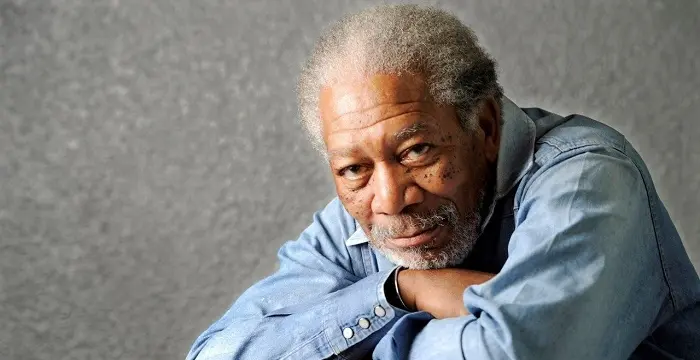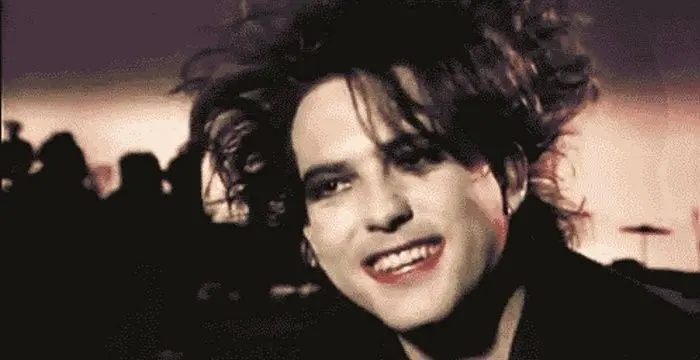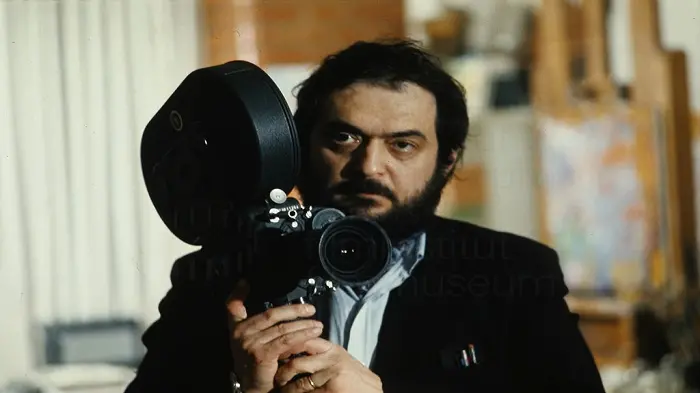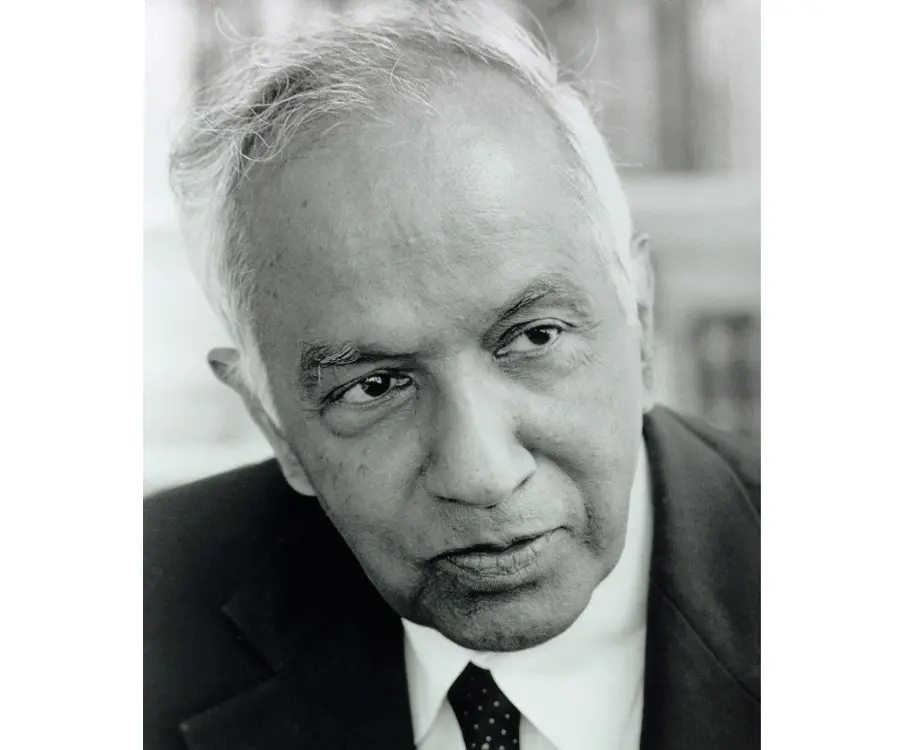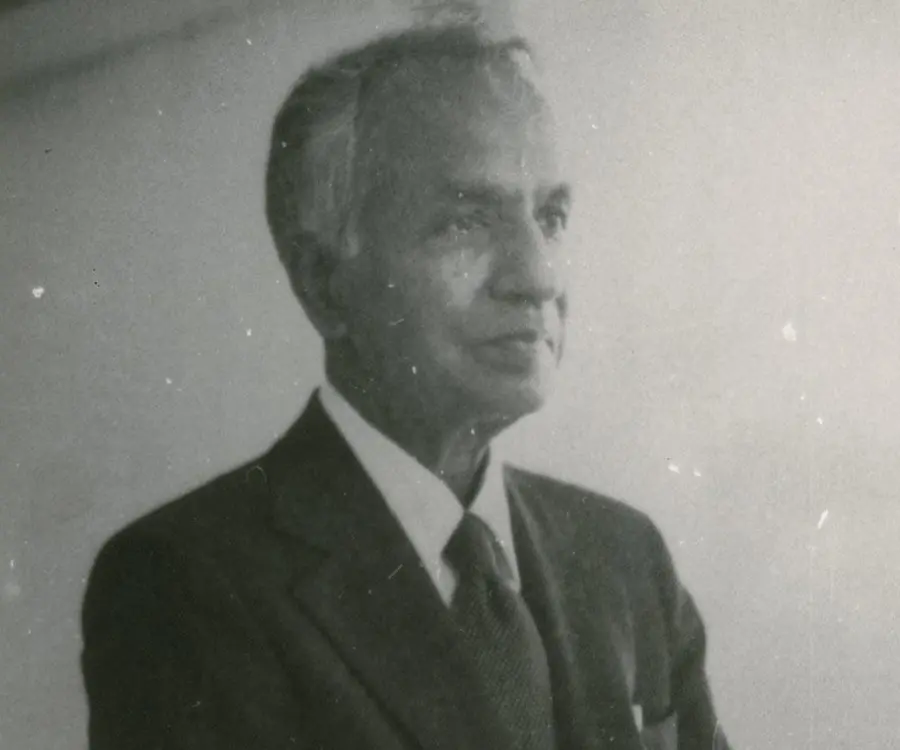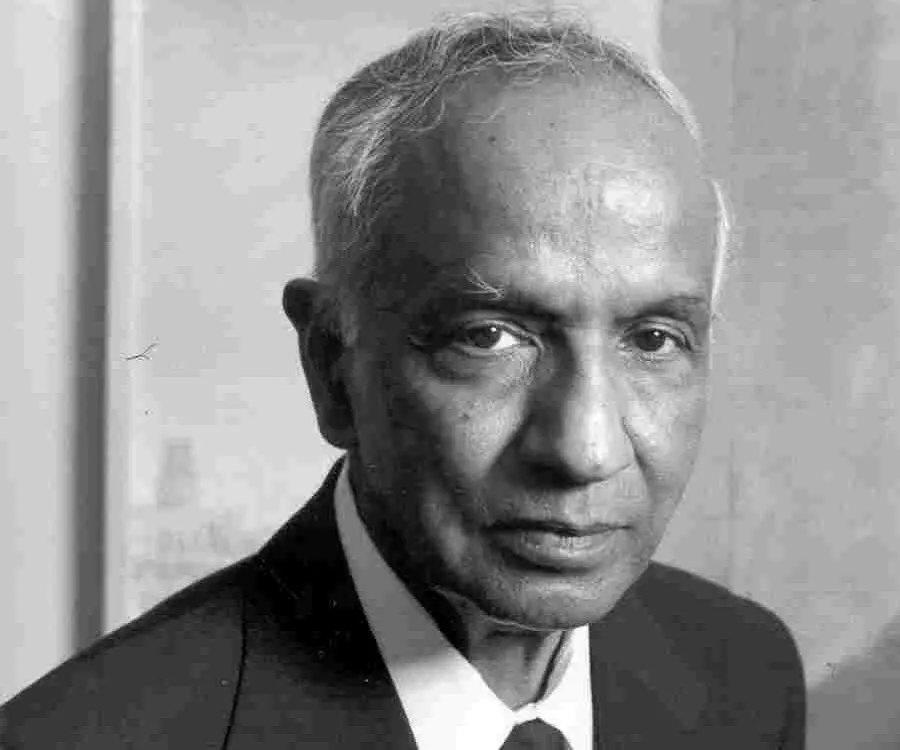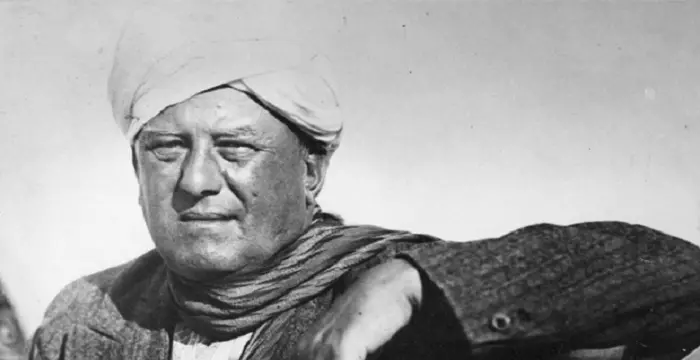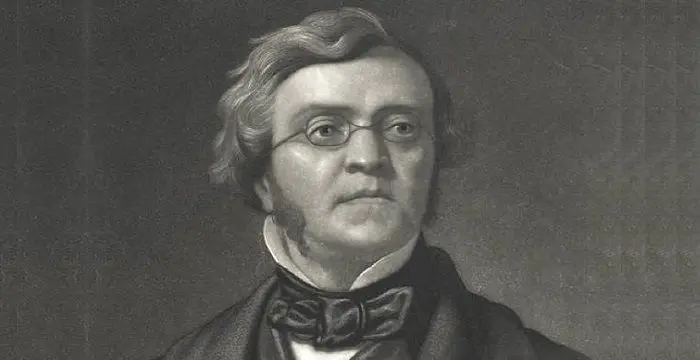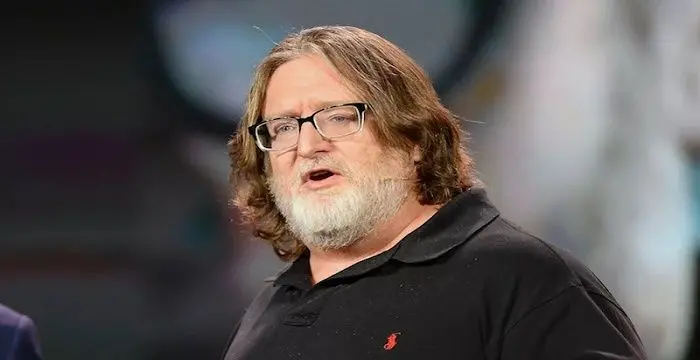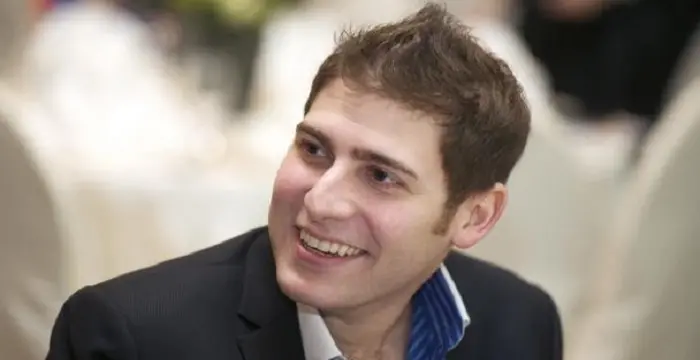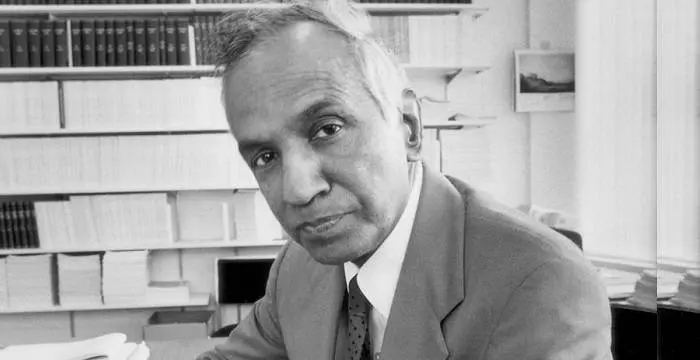
Subrahmanyan Chandrasekhar - Physicists, Facts and Family
Subrahmanyan Chandrasekhar's Personal Details
Subrahmanyan Chandrasekhar was a Nobel Prize winning astrophysicist most famous for his theory on black holes
| Information | Detail |
|---|---|
| Birthday | October 19, 1910 |
| Died on | August 21, 1995 |
| Nationality | Indian |
| Famous | Atheists, Trinity College, Cambridge, Scientists, Physicists |
| Spouses | Lalitha Chandrasekhar |
| Universities |
|
| Notable Alumnis |
|
| Birth Place | Lahore, British India |
| Gender | Male |
| Father | and Chandrasekhara Subrahmanya |
| Sun Sign | Libra |
| Born in | Lahore, British India |
| Died at Age | 84 |
// Famous Atheists
Morgan Freeman
Morgan Freeman is an Academy Award winning actor known for his work in movies like ‘Street Smart’, ‘Driving Miss Daisy’ and ‘Million Dollar Baby’. This biography provides detailed information about his childhood, life, achievements, works & timeline.
Robert Smith
Robert Smith is an English musician and the lead singer of the British rock band, ‘The Cure.’ This biography of Robert Smith gives detailed information on his profile, childhood, life and timeline.
Stanley Kubrick
Stanley Kubrick was a screenwriter and film director known for his movies like ‘The Clockwork Orange’ and ‘The Shining’. This biography of Stanley Kubrick provides detailed information about his childhood, life, achievements, works & timeline.
Subrahmanyan Chandrasekhar's photo
Who is Subrahmanyan Chandrasekhar?
A Nobel laureate, who along with William A. Fowler, won the Nobel Prize for Physics for his mathematical theory of black holes,, Subrahmanyan Chandrasekhar was an Indian-American astrophysicist best known for his work on the theoretical structure and evolution of stars. A highly intelligent man, his work ranged across the fields of stellar structure, radiative transfer, white dwarfs, quantum theory, hydrodynamic stability and mathematical theory of black holes. Born into a large family in Lahore, Punjab, young Chandrasekhar was expected to follow in his father’s footsteps and get himself established in government service. But fate had something else in store for him and the young boy found himself inexplicably pulled towards science and scientific pursuits. Even this was not totally unexpected—after all, the youngster’s paternal uncle, Sir C. V. Raman had already done the country proud by bagging a Nobel Prize for Physics. A brilliant student, he was awarded a Government of India scholarship to study at the University of Cambridge. Eventually he would become best known for what would become famous as the ‘Chandrasekhar Limit’. An unassuming man, he encouraged people to call him Chandra.
// Famous Trinity College, Cambridge
Isaac Newton
Isaac Newton was an English scientist and mathematician, who discovered gravitation and Newtonian Mechanics. Read this biography to find more on his life.
Aleister Crowley
Aleister Crowley was an occultist and ceremonial magician who founded the ethical philosophy of Thelema. This biography of Aleister Crowley provides detailed information about his childhood, life, achievements, works & timeline.
William Makepeace Thackeray
William Thackeray was an English novelist and satirist. Read this brief biography to find more on his life & timeline.
Childhood & Early Life
Chandrasekhar was born as one of the ten children of Chandrasekhara Subrahmanya and his wife Sitalakshmi, into a Tamil family in Punjab, India. His father was working as a Deputy Auditor General of the Northwestern Railways at that time.
As the eldest of four sons, he was expected to follow in his father’s footsteps and get a government job. But young Chandra was more inclined towards science, inspired by his paternal uncle, Sir C. V. Raman.
He attended the Hindu High School, Madras, from 1922-25 after receiving his primary education from tutors at home. In 1925 he enrolled at Presidency College, Madras, where he remained till 1930, writing his first paper, ‘The Compton Scattering and the New Statistics’ in 1929.
In June 1930 he received his B.SC. (Hon.) in Physics following which he was awarded a Government of India scholarship to pursue graduate studies at the University of Cambridge.
It was during his time in England that he became enamored with the concept of white dwarf stars. He began his work in the statistical mechanics of the degenerate electron gas in white dwarfs.
He attended the meetings of the Royal Astronomical Society where an acquaintance with Professor E.A. Milne provided much food for thought to the bright young soul. He was invited by Max Born to spend the year of 1931 at the Born’s Institute at Gottingen.
After working on opacities, and model stellar photospheres at Born’s Institute, he moved on to the Institute for Theoretical Physics in Copenhagen for his final year of studies.
He earned his PhD degree at Cambridge in 1933 and was elected to a Prize Fellowship at Trinity College for the period 1933–37.
Career
He was appointed as Assistant Professor in the University of Chicago in January 1937 on the recommendation of Dr. Otto Struve and President Robert Maynard Hutchins.
Chandrasekhar remained at the University of Chicago for his entire career, spanning almost six decades. He was made an associate professor in 1942 and a full professor in 1944.
In 1947 he was appointed the Distinguished Service Professor of Theoretical Astrophysics and became the professor emeritus in 1985.
He served as the editor of ‘The Astrophysical Journal’ from 1952 to 1971 and under his editorship converted the private journal into a National Journal of the American Astronomical Society.
Throughout his career he worked not just at the University of Chicago, but also later at NASA’s Laboratory for Astrophysics and Space Research which was built in 1966.
Even during his last years he kept himself extremely busy in the pursuit of newer scientific objectives. In 1990 he had begun the work on a project on the detailed geometric arguments in Sir Isaac Newton’s ‘Philosophiae Naturalis Principia Mathematica’.
Major Works
He is best known for discovering the ‘Chandrasekhar Limit’ with which he proved that there is a maximum mass which can be supported against gravity by pressure made up of electrons and nuclei. The most amazing thing about this discovery is that he came up with it while he was still a student.
Awards & Achievements
In 1968 he was honored with the Padma Vibushan, the second highest civilian award of India for his exceptional and distinguished services to the field of science.
He was jointly awarded the Nobel Prize in Physics in 1983 along with William A. Fowler for his work on the structure and evolution of stars. He was however upset that the citation mentioned only his earliest work and not his later ones.
Personal Life & Legacy
He met Lalitha Doraiswamy while he was at the Presidency College in Madras and the two struck up a deep friendship which soon blossomed into love. The couple married in September 1936 and shared many years of marital bliss. They did not have any children.
He died in 1995 of a heart attack and was survived by his wife of many years.
// Famous Physicists
Henry Cavendish
Henry Cavendish was a theoretical chemist and physicist, renowned for discovery of hydrogen and calculation of the mass of earth. To know more about his childhood, profile, timeline and career read on
Walter Kohn
Nobel Laureate Walter Kohn was an Austrian-born American theoretical chemist and physicist. Check out this biography to know about his childhood, life, achievements, works & timeline.
Nikola Tesla
Nikola Tesla was a Serbian-American inventor, best known for his development of alternating current electrical systems. This biography of Nikola Tesla provides detailed information about his childhood, life, achievements, works & timeline.
Subrahmanyan Chandrasekhar's awards
| Year | Name | Award |
|---|---|---|
Other | ||
| 0 | Nobel Prize in Physics (1983) | |
| 0 | Adams Prize (1948) | |
| 0 | Padma Vibhushan (1968) | |
Subrahmanyan Chandrasekhar biography timelines
- // 19th Oct 1910Chandrasekhar was born as one of the ten children of Chandrasekhara Subrahmanya and his wife Sitalakshmi, into a Tamil family in Punjab, India. His father was working as a Deputy Auditor General of the Northwestern Railways at that time.
- // 1922He attended the Hindu High School, Madras, from 1922-25 after receiving his primary education from tutors at home. In 1925 he enrolled at Presidency College, Madras, where he remained till 1930, writing his first paper, ‘The Compton Scattering and the New Statistics’ in 1929.
- // 1930In June 1930 he received his B.SC. (Hon.) in Physics following which he was awarded a Government of India scholarship to pursue graduate studies at the University of Cambridge.
- // 1931He attended the meetings of the Royal Astronomical Society where an acquaintance with Professor E.A. Milne provided much food for thought to the bright young soul. He was invited by Max Born to spend the year of 1931 at the Born’s Institute at Gottingen.
- // 1933He earned his PhD degree at Cambridge in 1933 and was elected to a Prize Fellowship at Trinity College for the period 1933–37.
- // 1936He met Lalitha Doraiswamy while he was at the Presidency College in Madras and the two struck up a deep friendship which soon blossomed into love. The couple married in September 1936 and shared many years of marital bliss. They did not have any children.
- // 1937He was appointed as Assistant Professor in the University of Chicago in January 1937 on the recommendation of Dr. Otto Struve and President Robert Maynard Hutchins.
- // 1942Chandrasekhar remained at the University of Chicago for his entire career, spanning almost six decades. He was made an associate professor in 1942 and a full professor in 1944.
- // 1947In 1947 he was appointed the Distinguished Service Professor of Theoretical Astrophysics and became the professor emeritus in 1985.
- // 1952 To 1971He served as the editor of ‘The Astrophysical Journal’ from 1952 to 1971 and under his editorship converted the private journal into a National Journal of the American Astronomical Society.
- // 1968In 1968 he was honored with the Padma Vibushan, the second highest civilian award of India for his exceptional and distinguished services to the field of science.
- // 1983He was jointly awarded the Nobel Prize in Physics in 1983 along with William A. Fowler for his work on the structure and evolution of stars. He was however upset that the citation mentioned only his earliest work and not his later ones.
- // 1990Even during his last years he kept himself extremely busy in the pursuit of newer scientific objectives. In 1990 he had begun the work on a project on the detailed geometric arguments in Sir Isaac Newton’s ‘Philosophiae Naturalis Principia Mathematica’.
- // 21st Aug 1995He died in 1995 of a heart attack and was survived by his wife of many years.
// Famous Scientists
Juliane Koepcke
Juliane Koepcke is a German-Peruvian biologist, who was the lone survivor among the 92 passengers and crew of the ill-fated LANSA Flight 508 that crashed in the Peruvian rainforest on 24 December 1971. Know more about her life in this biography.
Henry Cavendish
Henry Cavendish was a theoretical chemist and physicist, renowned for discovery of hydrogen and calculation of the mass of earth. To know more about his childhood, profile, timeline and career read on
Konstantin Tsiolkovsky
Konstantin Tsiolkovsky was a Russian rocket scientist and a pioneer of astronautics. This biography provides detailed information about his childhood, family, personal life, career, achievements, etc.
Gabe Newell
Gabe Newell is an American computer programmer and businessman, best known as the co-founder of ‘Valve Corporation.’ This biography provides detailed information about his childhood, family, personal life, career, etc.
Grigori Perelman
Grigori Perelman is a Russian mathematician who is best known for his contributions to Riemannian geometry and geometric topology. Check out this biography to know about his childhood, family life, achievements and fun facts about him.
Eduardo Saverin
Eduardo Luiz Saverin is a Brazilian internet entrepreneur and investor. This biography profiles his childhood, life, career, achievements, and timeline
Subrahmanyan Chandrasekhar's FAQ
What is Subrahmanyan Chandrasekhar birthday?
Subrahmanyan Chandrasekhar was born at 1910-10-19
When was Subrahmanyan Chandrasekhar died?
Subrahmanyan Chandrasekhar was died at 1995-08-21
Where was Subrahmanyan Chandrasekhar died?
Subrahmanyan Chandrasekhar was died in Chicago, Illinois, United States
Which age was Subrahmanyan Chandrasekhar died?
Subrahmanyan Chandrasekhar was died at age 84
Where is Subrahmanyan Chandrasekhar's birth place?
Subrahmanyan Chandrasekhar was born in Lahore, British India
What is Subrahmanyan Chandrasekhar nationalities?
Subrahmanyan Chandrasekhar's nationalities is Indian
Who is Subrahmanyan Chandrasekhar spouses?
Subrahmanyan Chandrasekhar's spouses is Lalitha Chandrasekhar
What was Subrahmanyan Chandrasekhar universities?
Subrahmanyan Chandrasekhar studied at Trinity College, Cambridge
What was Subrahmanyan Chandrasekhar notable alumnis?
Subrahmanyan Chandrasekhar's notable alumnis is Trinity College, Cambridge
Who is Subrahmanyan Chandrasekhar's father?
Subrahmanyan Chandrasekhar's father is and Chandrasekhara Subrahmanya
What is Subrahmanyan Chandrasekhar's sun sign?
Subrahmanyan Chandrasekhar is Libra
